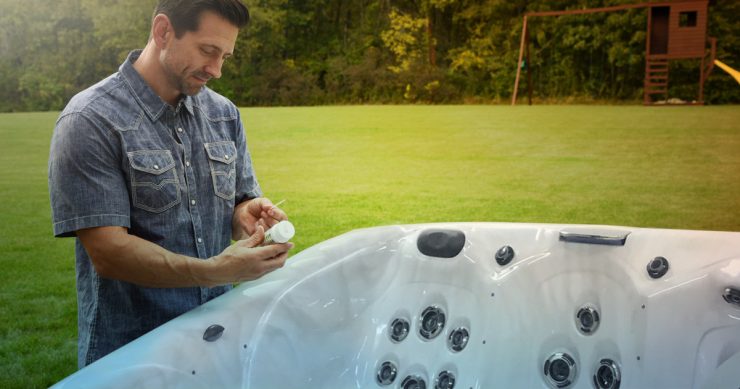It might not sound relaxing to think about the chemicals that you put in your hot tub. Chlorine, bromine, a pH increaser. But do you know what’s even less relaxing? Hopping into a tub of water with zero chemicals. Afterall, you wouldn’t reuse bath water day after day.
While you could use a hot tub without chemicals, you could not soak safely. Water needs to be circulating and treated in order for it to be good for soaking. When you don’t use chemicals in your hot tub or use too little, you are creating the perfect environment for algae, bacteria, and other contaminants to thrive.
Attempting to use your hot tub without chemicals could leave your water green or cloudy, as the water temperature is the ideal range for contaminants to grow.
Hot tub chemicals are often misunderstood and given a bad “rap.” They are actually good for your water and keep it smelling fresh and feeling soft to the touch. Understanding why you need hot tub chemicals can help you feel confident treating the water.
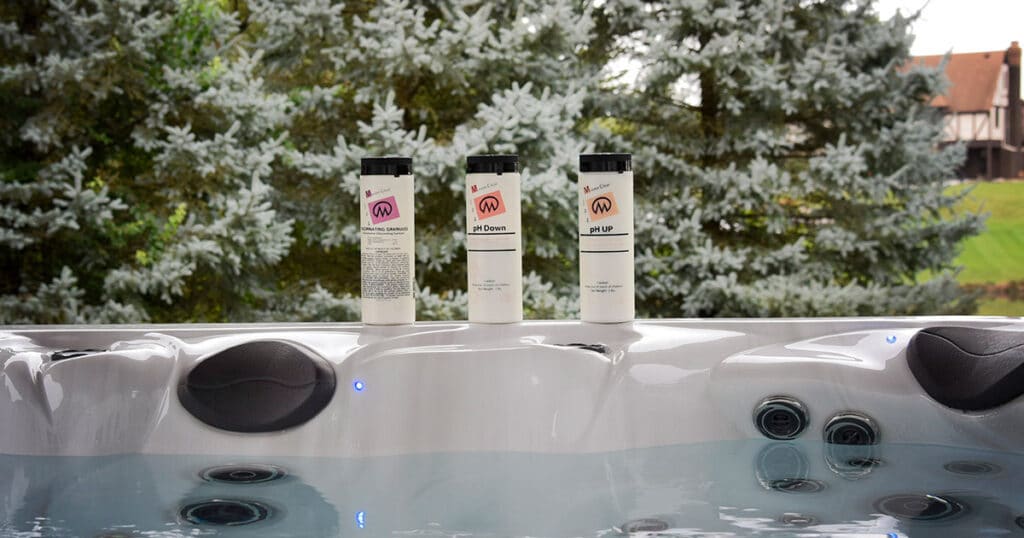
Basics of hot tub chemicals
You might have seen a billboard or online advertising for a chemical-free hot tub. It seems like a fantastic idea. Right?
Wrong. The idea of a chemical-free hot tub is an urban legend and one that could prove dangerous. Chemicals actually do your spa good — rather than cause harm.
What do hot tub chemicals do? In three words: Keep you safe.
Sanitizers like chlorine, as well as the other products, make sure that the water is clean and clear and ideal for relaxing. These chemicals are added to the water on a regular basis, keeping the water balanced.
Master Spas hot tub owners will use a few products on a regular basis, which work side by side with the EcoPur mineral filtration system. Your typical hot tub chemical kit will include chlorine, pH up, pH down, sequestering agent, and oxidizer.
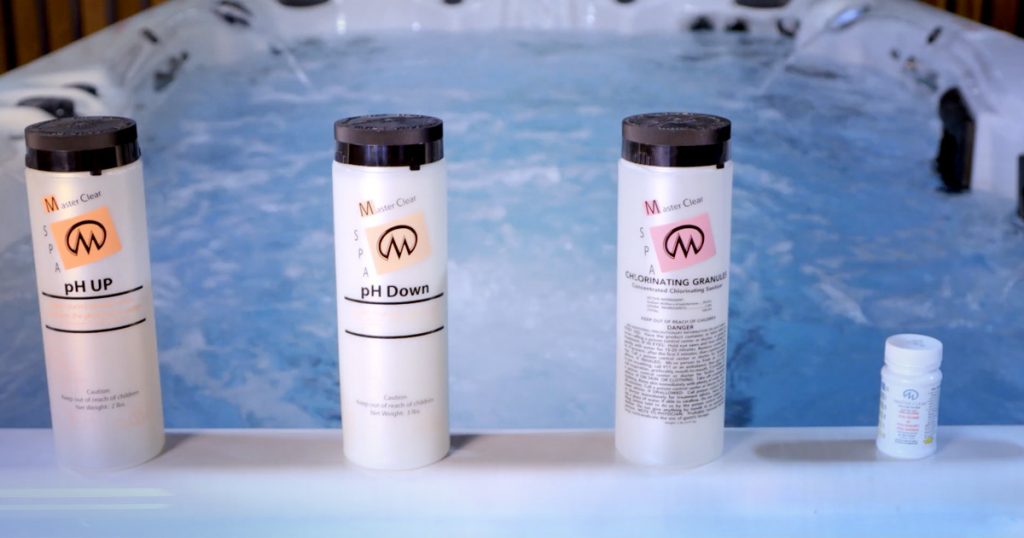
Why do you need to use hot tub chemicals?
There are several reasons why you cannot use your hot tub without chemicals. Among them are evaporation, heat, environment, and people using the hot tub.
Evaporation. As water evaporates, salts, minerals, metals, and any unused chemicals are left behind. Adding water adds more salts, minerals, and metals. In time, the water can become saturated with these dissolved solids and can cause stains or scale to form on the walls of the spa or a scale build up inside the equipment. If you don’t add chemicals, the water can turn green or become cloudy. These dissolved solids can also corrode the components of your spa.
Heat. A hot tub is a hot tub because it’s kept at a higher temperature, when compared to a pool or swim spa. The temperature causes the water to evaporate more quickly.
Environment. People ask “Can I use my hot tub without chemicals?” because they don’t want to put anything in the water. However, the environment introduces other elements to the water. Pollen, grass, dirt, lawn fertilizer, airborne dust, insects, and leaves can affect the water quality.
People. Any time you get into a hot tub, you bring things into the water. Body oil, lotions, and dirt on your skin can contaminate the water. These things increase the demand for a sanitizer in your water. The more you use the spa and/or the more people who hop in, the more you will need to treat the water.
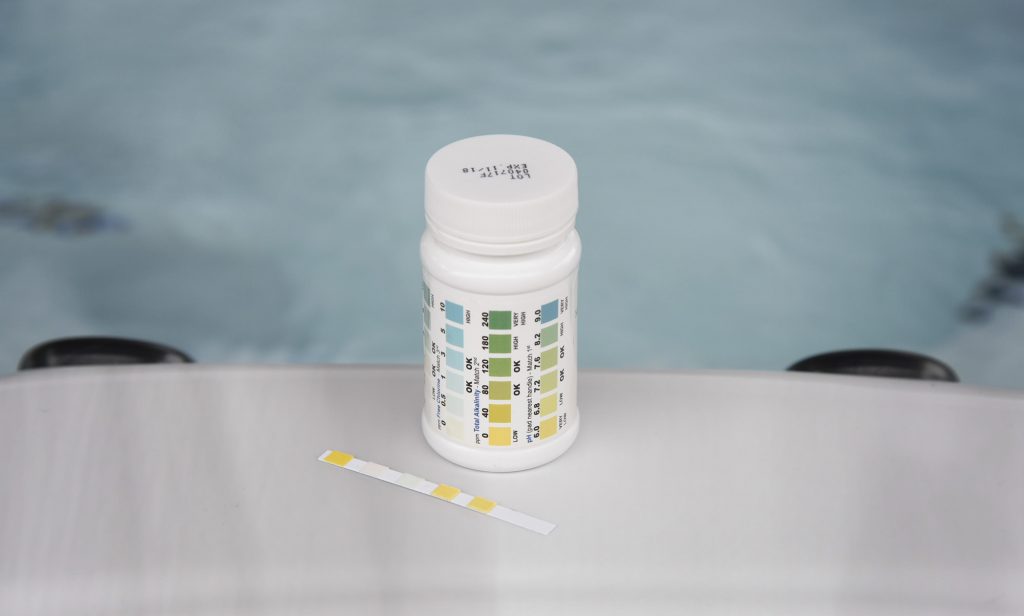
The no-chemical hot tub?
Oftentimes, when you ask, “Can I use my hot tub without chemicals?” you are thinking about one chemical.
Chlorine.
Some people do not want to use chlorine in their water … it’s harsh, it smells bad, it’s bad for your skin. But a bad experience in a public pool or hot tub should not deter you from using chlorine in your hot tub. It’s the best sanitizer for your spa, and Master Spas’ EcoPur system was designed to be used with chlorine.
An alternative to a chlorinated hot tub is a salt system. These salt water spas are often called a “no chemical hot tub” because you don’t have to add chlorine to the water.
But that doesn’t mean you don’t need chemicals or there isn’t chlorine in a saltwater hot tub.
Salt systems use a built-in cell that creates a chemical reaction, which in turn produces chlorine. Yep. You read that correctly. Even if you have a so-called “no chemical hot tub” with a salt system, it’s chlorine cleaning your water.
It’s important to know, too, that you will still have to balance your total alkalinity and pH levels. Some saltwater spas also require a non-chlorine shock.
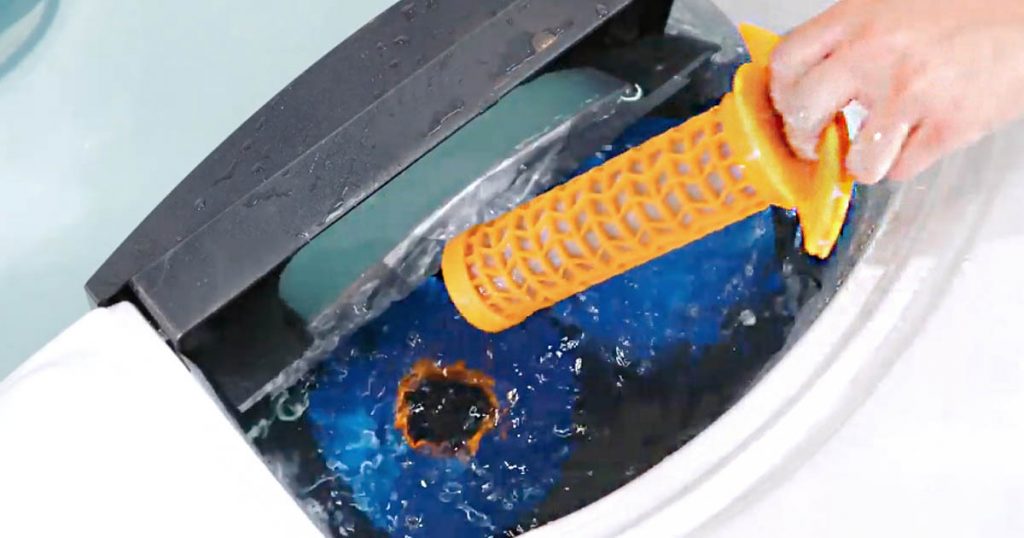
Tips to reduce hot tub chemicals
While you can’t keep a hot tub clean without chemicals, you can use fewer products in your spa.
How?
Preventative action and proper maintenance, combined with a quality spa, can make water care easier and safer.
Shower. Taking a shower or rinsing off before you get in the hot tub will remove body lotion, oils, and other things on your skin. Remember, what’s on your skin and in your hair will increase the workload on the sanitizer. The harder the chlorine has to “work,” the more you will have to add. or rinse off before getting in the hot tub
Filters. The filters of your hot tub are the unsung hero of clean hot tub water. With specially designed fabric and pleats, the filter catches contaminants in your water. But you need to take care of your filters if you want them to take of your water. Make sure you are on top of maintenance including rinsing, cleaning, and swapping out your hot tub filters. Master Spas recommends that you rinse your filters once week and soak them in a filter cleaner every month. Having a second set of filters to swap out can make filter care easier.
Ozone system. Select Master Spas hot tubs feature an ozone system, which kills pathogens and microorganisms. It also destroys other organic materials so you need fewer chemicals.
EcoPur filtration system. The EcoPur® system, which includes a special core, filters out contaminants, microorganisms and heavy metals from the water. The system was designed to utilize natural minerals such as copper and zinc, mimicking nature’s water purification process.
To learn more about the EcoPur system and Master Spas hot tubs, find your local retailer.


